Last-Minute NYC Holiday Gift Guide 🎁
We’ve created a holiday gift guide with presents for the intrepid New Yorker that should arrive just in time—


Manhattan has a river that clearly defines its edge. Paris has a highway, the Périphérique, which can be considered the division of city and suburb. Sydney itself is massive; one of the largest cities in its land size with over 300 suburbs. To the east lies the Pacific Ocean. Surrounding the Central Business District (CBD) are hundreds of village like neighborhoods which begin to expand in size over an area more than 4,500 square miles, reaching west towards a majestic mountain range which serves as the city’s boundary.
Drive one hour out of the city center in any direction and you can be surrounded by native wildlife like kangaroos and wombats (which unfortunately are also often road kill), koalas, sleeping in trees, sheep running in herds. You could be swimming at secluded white sand beaches amidst dolphins, drinking wine in the various vineyard regions, or climbing sandstone plateaus in world heritage listed habitats.
90 minutes west of Sydney, bordering the Sydney metropolitan area, you reach the dramatic Blue Mountains. The region itself is recognized by UNESCO as providing “outstanding universal value” because of its eucalypt habitats. Its dramatic sandstone peaks and valleys stretch across more than two million acres.

The name, as the visitor information explains, comes from the blue haze that covers the valley, produced by dripping eucalyptus oil. “The atmosphere is filled with finely dispersed droplets of oil from eucalyptus trees, which, in combination with dust particles and water vapor, scatter short-wave length rays of light which are predominantly blue in color.” You can smell the eucalyptus as you ascend and descend the mountains (factoid: eucalyptus, native to Australia, was brought to California in the 1850s by Aussie Gold Rushers).
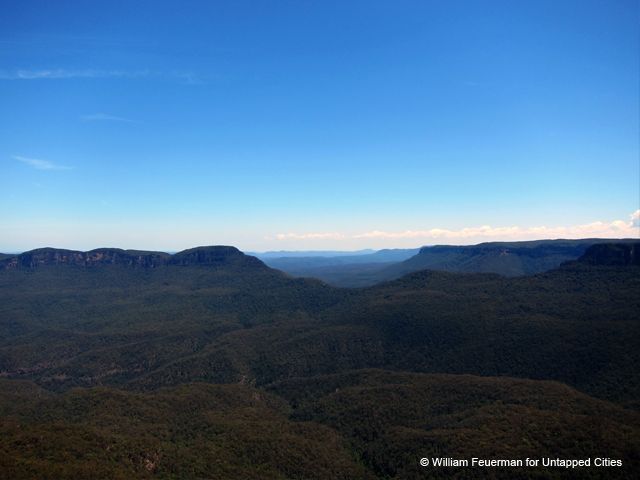
The Three Sisters, the Blue Mountain’s most visited attraction, is an awe inspiring site. Three dramatic rock formations have been transformed over time by different forces of weather (wind, rain,etc). The Three Sisters, standing around 3,000 plus feet above sea level, gets its name from an aboriginal dream legend, although there are two different stories that are believed. The first was a case of Romeo and Juliet, the second a story of a witchdoctor father protecting his daughters from a Bunyip, a frightening aboriginal mythical creature.
While I am not one to advocate for which is right or wrong, as somewhat of a romantic, I tend to lean towards the Shakespearean version. It’s a story of three sisters from the Katoomba tribe falling in love with three brothers from the Nepean tribe. With tribal law forbidding intermarriage, the brothers decided to capture the sisters, resulting in battle. With the lives of the three sisters threatened, a witchdoctor turned them to stone for protection. Unfortunate circumstances led to the witchdoctor’s death and the spell was never reversed. To this day the three sisters stand tall and bold at the edge of a sweeping blue veiled valley, stranded in solitary confinement for an eternity.

Millions of visitors every year come to this site to see the Three Sisters and to explore the array of attractions that the Blue Mountains has to offer. Quaint hidden towns, such as Leura, where I stopped for a high tea, are just a turn off from the main highway. The scenery’s color resembles what I think of when I think of the American west-orangish, reddish, brown, sandstone except you can add to that the lushness and infinite continuity of the eucalyptus tree. One can explore the many surrounding bushwalks to experience a diverse mix of rainforest, canyons, tall forests and heathlands. As a foreigner, it is both a familiar and unfamiliar place.

For even more exposure to the wanders of the Blue Mountains you can go to Scenic World, a former coal mine turned amusement/scenic park. With several attractions designed around experiencing the Blue Mountain’s different environments. One can ride the Skyway, with its glass floor, hovering more than 2,300 feet above Katoomba Falls with views of the Three Sisters and the expanse of the Jamison Valley in the distance. One can ride the steepest incline railway in the world, a former track for transporting coal to Sydney, taking you through cliff side tunnels and down to an ancient rainforest (I have to admit, it’s a lot of fun).
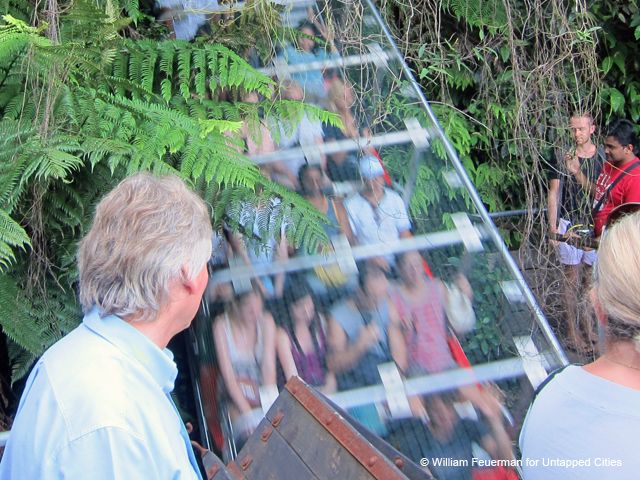
And if you want to extend your Blue Mountain adventure by another day (which is well worth it) take an additional one-and-a-half-hour drive (along some dirt roads = make sure your tank is full of gasoline) to the Jenolan Caves, the oldest discovered system of open caves in the world. It’s extraordinarily beautiful. First the approach- a windy two lane road barely the width of one car meets an even narrower bridge that opens up to a massive rock with a road carved through it. At the end of the road the Edwardian style Jenolan Caves House (the only place to stay) appears isolated in a lush valley, surrounded by crystal-filled limestone mountains.
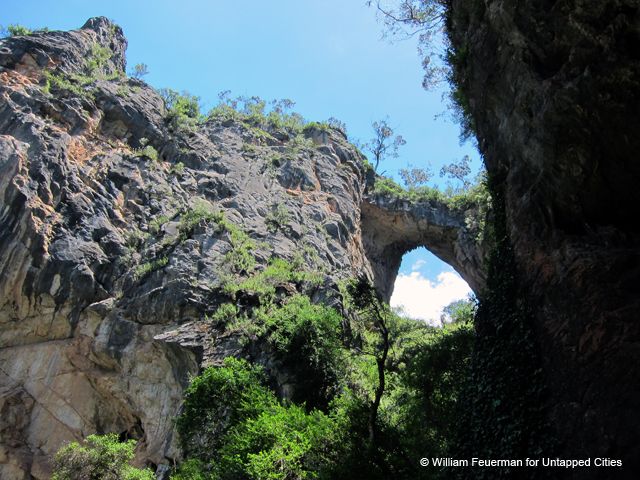
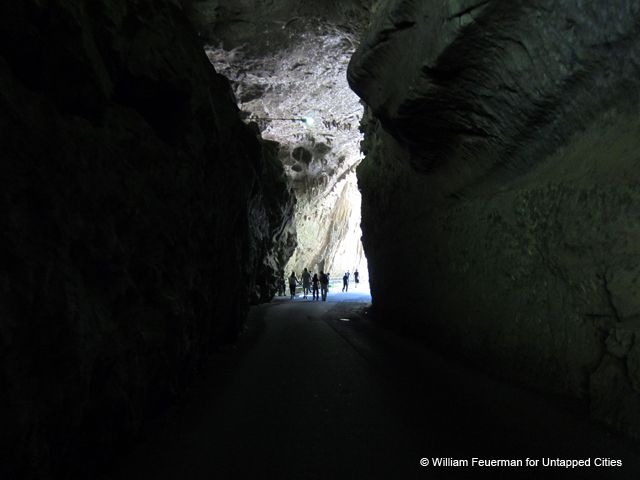

Discovered in 1838 by a convict bushranger, the caves themselves are still undergoing active exploration but many have been made accessible to the general public accommodating over 250,000 visitors a year. You can choose between the 11 tours, some more advanced than others. I went with the masses and joined the most popular tour of the Lucas Cave. Named after the man that pushed to have the caves preserved in the 1860’s, the tour takes you on a magical journey through a variety of chambers, some so narrow and short that you have to watch every step, others as tall as a sixteen storey building.
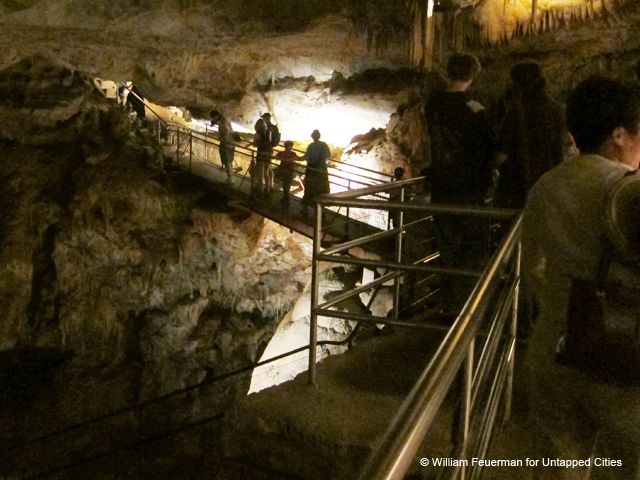
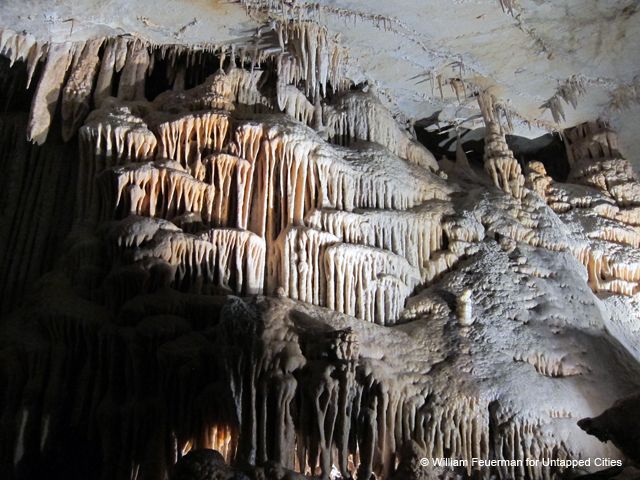
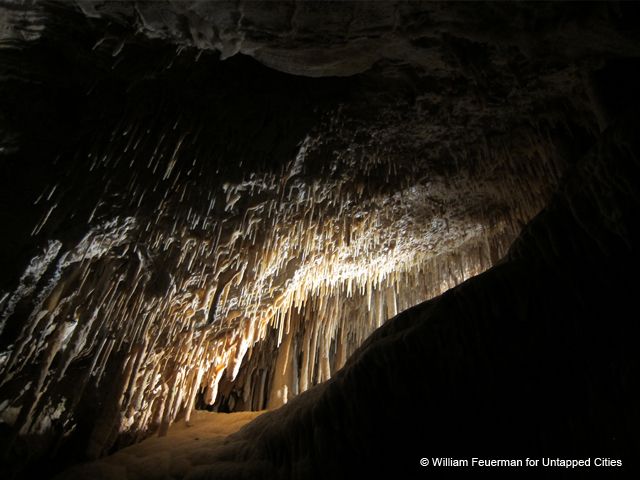
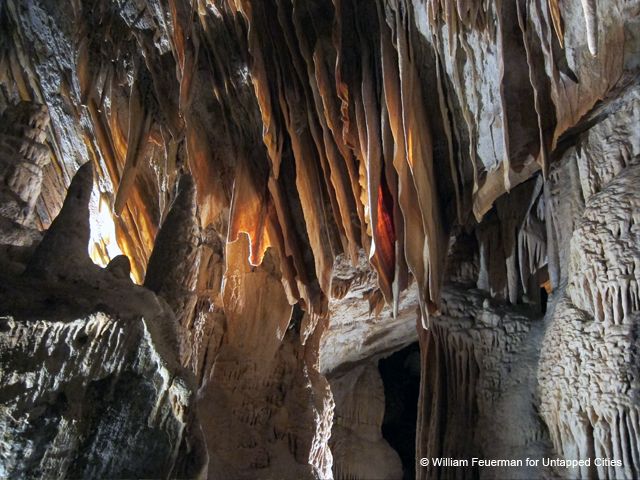

The temperature dramatically drops as you enter the dark caves and descend into what feels like Chutes and Ladders (known in Australia as Snakes and Ladders). It’s totally surreal as you move through the varying environments that have been formed by the forces of nature.
Water drips form the range of stalactites hanging from above. Stalagmites rise from the floor due to the dripping of mineralized solutions and the deposition of calcium carbonate. When the formation is continuous from ceiling to ground it forms a column. It’s visually stunning. Like nothing I have ever seen before. The two hour tour takes you through the Cathedral Chamber, acclaimed for its acoustics and the location of monthly concerts, above streaming rivers hundreds of feet below you and past the Broken Column, apparently the “most photographed limestone formation at Jenolan.” It is well worth the visit!

Three hours later and you can be home with a cocktail in hand, reminiscing about the flying ant plague you encountered (no joke, one of the most violating experiences of my life); the caves you climbed; some of the oldest land formations in the world you explored; and the amazing wildlife you saw. I think I now know what the Pet Shop Boys had in mind when they wrote the lyrics, “go west, life is peaceful there, go west, in the open air, go west, where the skies are blue, this is what we are going to do.” Now I need to craft the next getaway”¦

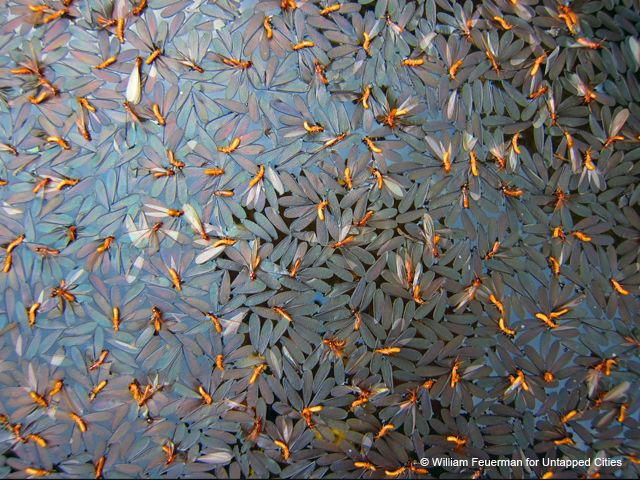
William Feuerman is a New Yorker (via Los Angeles and San Francisco) who is currently living in Sydney, Australia. He is the principal of Office Feuerman, a Sydney based design office, and is faculty at the University of Technology Sydney (UTS). You can follow him on twitter @OfficeFeuerman.
Subscribe to our newsletter